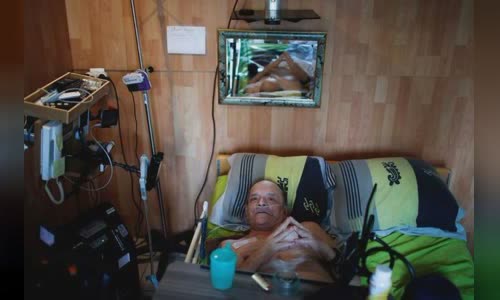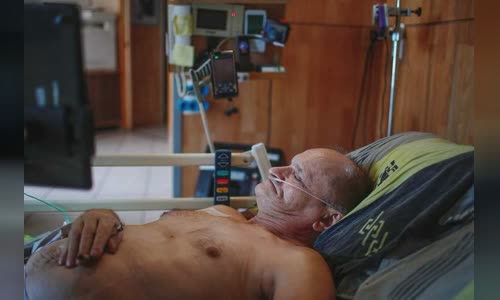Switzerland, the Netherlands, and Belgium are among the countries that allow medical assistance to help patients die smoothly, but there are separate regulations.
The fact that Mr. Alain Cocq, 57, of France, announced the livestream of his death after being denied the right to euthanasia by the French President, caused the controversial issue to attract attention in international media.

Mr. Alain Cocq, French, in an interview with the press at home in Dijon, France, on August 19 Photo: Reuters
Cocq suffers from a rare condition that causes the artery walls to stick together for the past 34 years and believes she has less than a week to live.
Cocq plans to livestream his death from September 5.
Painless death, also known as euthanasia, refers to a situation in which positive measures are taken to end someone's life, but the act must be performed by someone else.
This concept is different from assisted suicide, in that a person ends his or her life with support from someone, but not a doctor.
The right to be supported to die without pain is a controversial issue in many countries, with supporters claiming that in civilized society, people should be chosen when they are ready to die and should be
However, opponents have taken a moral stance against euthanasia and euthanasia, claiming that life is God-given for mankind and that only God can take away.
There are a number of countries that have legal suicides, but with strict conditions.
Switzerland is often the first country to be mentioned when it comes to euthanasia.
However, euthanasia is considered illegal if the motive is "personal interest", for example helping someone die in order to inherit earlier, or not wanting to be burdened by caring for the sick person.
In 2018, 221 people went to the Dignitas Swiss clinic for support to die.
In the Netherlands, both painless death and suicidal support are legal, in cases where a person is in overwhelming pain and has no chance to improve the situation.
Children 12 years of age or older can request death assistance, but children under the age of 16 need consent from a parent.
More tests will be done before an autopsy is passed.
According to a report by the Regional Safety Commission 2017 (RTE), in the Netherlands there were 6,585 painless voluntary deaths or suicide, accounting for 4.4% of the total deaths here.

Mr. Alain Cocq, French, at home in Dijon, France, on August 19 Photo: Reuters
Belgium allows both the right to death without pain and to support suicide for those in great pain and with no chance of improvement.
Belgium has no age limit for children in this regard, but must have a terminal illness to meet the death support criteria.
Luxembourg allows only adults to die painlessly and assisted suicide.
This law applies similarly in Canada to adults with a "foreseeable" death.
Late stage patients in Colombia can request voluntary death and must be approved by an independent committee.
Australia's Victoria passed a voluntary death law on November 2017 after 20 years of debate and 50 failed attempts.
To be approved for death under the above form, the person must be a self-determined adult, a Victorian resident and suffer from an illness with less than 6 months or 12 months of survival if ill
The patient must submit three requests for the plan, one in writing, which is then evaluated by two physicians, including a specialist, to determine whether the condition is met.
If so, the patient will be prescribed medications and must be kept in a "locked box" until the time of the procedure.
Many US states provide legal aid to death.
All of the above states require a wait period of 15 days between two oral petitions, 2 days between the last written petition and the completion of the prescription.
The Dharma allows a person to ask for deep anesthesia until they die but not for death support.
New Zealand legalized its request to die voluntarily in a second parliamentary vote in June 2019 with 70 votes in favor of 50 against.
However, the bill still needs to be reviewed for the last time before being passed into law and it is very difficult to come into practice.



 Kalpana Srivastava
Kalpana Srivastava







